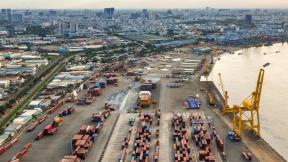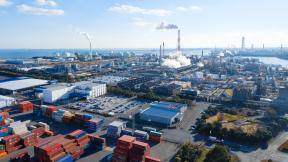The importance of foreign direct investment (FDI) in promoting economic growth, the transfer of technology and skill, among other benefits, and its crucial role in the achievement of other Sustainable Development Goals (SDGs) has been largely discussed in the literature. Given the importance of FDI and the desire of all economies to improve the level of FDI, a growing literature has engaged in understanding its determinants. With regard to Africa, in particular, efforts to enhance FDI inflows have been initiated and are still ongoing. Despite these efforts, the level of FDI inflows into Africa is the lowest globally. When considering the various factors driving the inflows of FDI into the continents it becomes evident that seaport infrastructure efficiency is one of the most essential factors. It is well acknowledged that seaports serve as vital gateways for international trade, providing access to global market and fostering economic connectivity between economies. Seaport efficiency therefore directly impact the ease of doing business and the attractiveness of a country as an investment destination. Maintaining an efficient seaport infrastructure remains crucial and non-negotiable for improving FDI inflows in Africa. This study attempts to contribute to the growing literature on the determinants of FDI and provide insights for policymakers by examining, for the first time, the impact of seaport efficiency on FDI in Africa.
Available data on 32 African countries with seaports, for the period 2018 to 2022, are used while, for estimation purposes, the panel generalised method of moments that addresses potential endogeneity concerns is employed. Seaport efficiency is measured in nine ways: median time spent in ports, average age of vessels, average and maximum size of vessels, average and maximum cargo carrying capacity, average and maximum container carrying capacity, and liner shipping connectivity index. Additionally, the study employs principal component analysis and data envelopment analysis to generate an aggregate measure of seaport efficiency based on the disaggregated measures. The net inflow of FDI as a percentage of GDP is used as the outcome variable. Data on seaport efficiency is sourced from UNCTAD, while FDI is obtained from the World Bank World Development Indicators.
Given the implementation of the African Continental Free Trade Agreement (AfCFTA), this study becomes timely and significant because the continent is plagued by a low level of seaport infrastructure efficiency, and FDI flow to the region is considered the lowest globally. AfCFTA presents significant opportunities for increased FDI in Africa by reducing barriers to trade and enhancing the ease of doing business in Africa. With this motive, investors in an AfCFTA member state may have access to an expanded market for goods and services across Africa. Therefore, investigating the relationship between seaport infrastructure efficiency and FDI would provide insight to policymakers to design policies that enhance seaport efficiency, as well as guide policy decisions to improve trade infrastructure, thereby attracting FDI inflow to the region.
The Impact of Seaport Infrastructure Efficiency on Foreign Direct Investment in Africa
This project has been retired

Small Research Grants
Research Team
Related content























































































